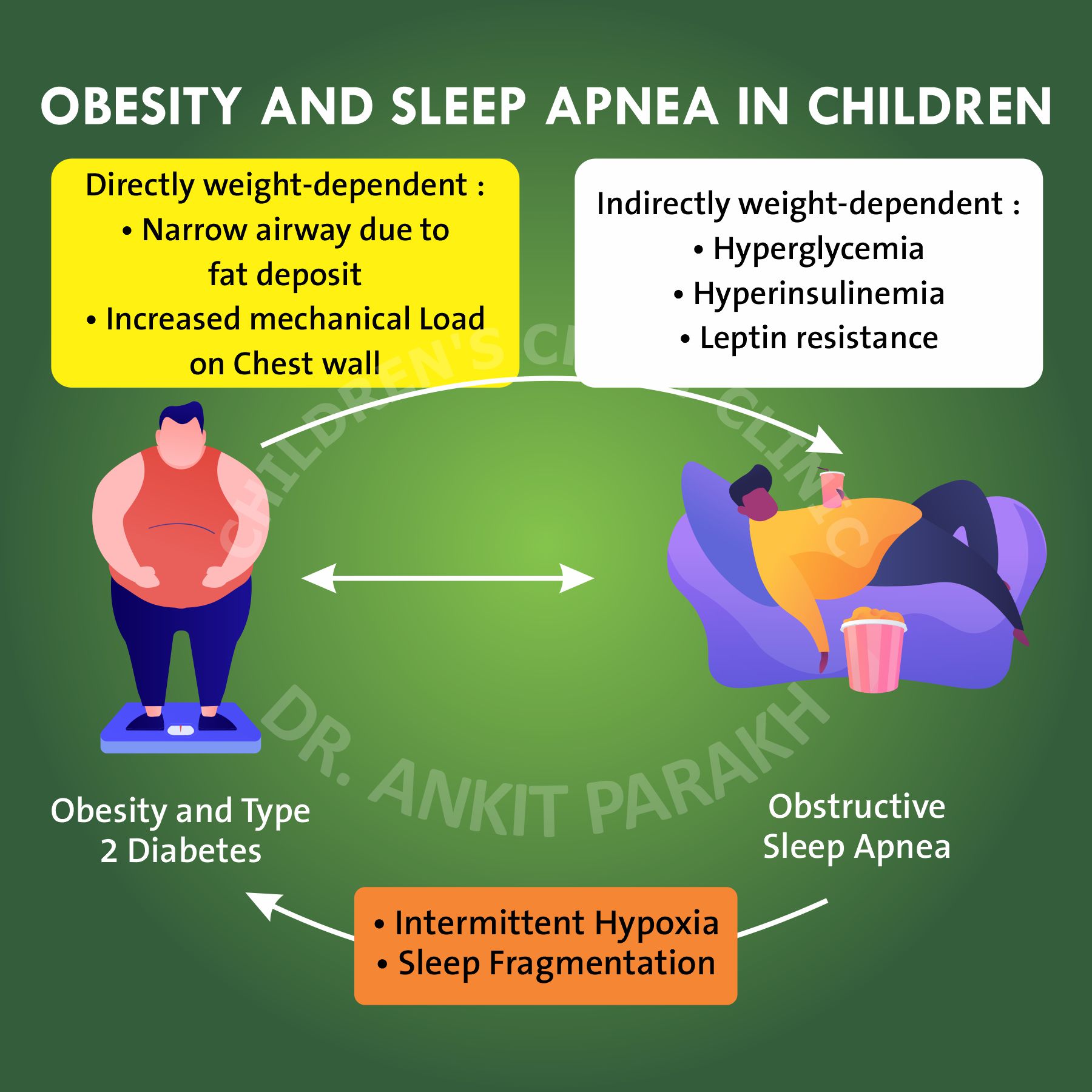Obstructive Sleep Apnea is significantly more common in children with overweight or obesity compared to children with normal weight. The risk of sleep apnea continues to increase with a rising body mask index. Even a 10% weight gain is associated with a six-fold increase in the risk of sleep apnea.
How does obesity lead to sleep apnea in children?
With obesity fat deposits in the child’s neck are called pharyngeal fat, which can block the child’s airway during sleep when the airway is already relaxed. In addition excess fat deposition on the tummy and the chest wall compresses the chest wall and reduces the lung volume and compliance. Obesity also leads to disturbance in the hormonal balance especially the leptin which leads to reduced respiratory drive leading to a condition called as obesity hypoventilation syndrome. Children having sleep apnea also tend to gain weight due to reasons like reduced daytime activity and hormonal imbalance.
What are the symptoms of sleep apnea in obese children?
The common symptoms of sleep apnea are regular snoring with accompanied gasps, snorting noises, observed episodes of stoppage of breathing, sleeping in a seated position or with the neck hyperextended. Children can have daytime symptoms like excessive sleepiness, learning problems, reduction in school performance and attention-deficit/hyperactivity disorder.
How do we diagnose sleep apnea in children with obesity?
Children with obesity and any of the clinical symptoms as detailed above should be evaluated for sleep apnea. A proper diagnosis of sleep apnea is critical and requires a sleep study or a polysomnography.
Treatment of sleep apnea related to obesity
Early treatment is essential to improve outcomes. Treatment involves both measures for weight reduction and treatment of sleep apnea. Treatment involves adenotonsillectomy (if having enlarged tonsils and adenoids) and CPAP therapy. Children with sleep apnea and obesity who effectively manage their sleep apnea find it easier to lose weight.


